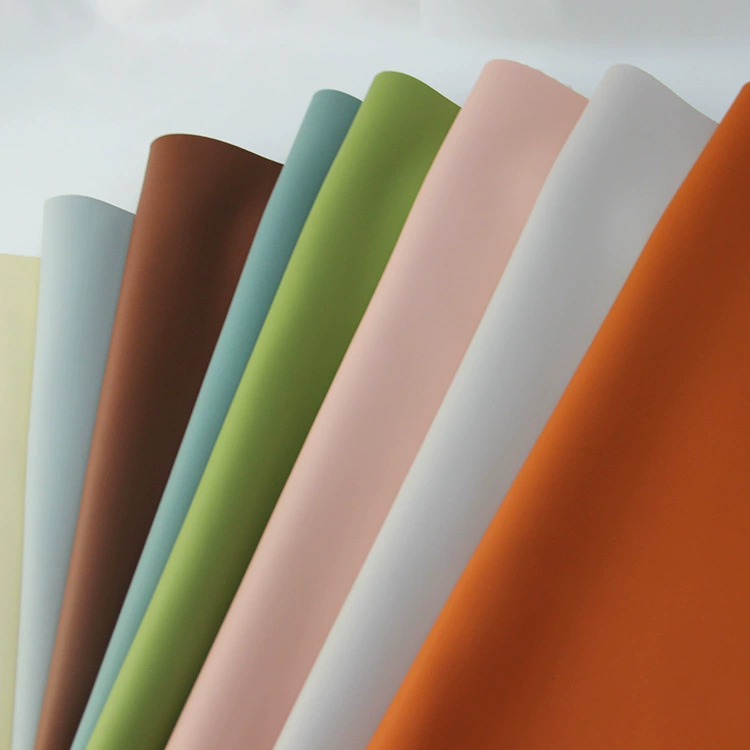- This topic is empty.
-
AuthorPosts
-
2025-11-21 at 11:07 am #5515
https://www.dspupvc.com/what-is-bio-based-pu-artificial-leather.html
Bio-based PU artificial leather is becoming a major trend in the global synthetic leather industry, driven by the demand for environmentally friendly and sustainable materials. As an innovative manufacturer in the field, Guangzhou DaShang Leather Technology Co., Ltd. specializes in developing high-performance, eco-conscious PU materials that minimize environmental impact while maintaining excellent mechanical and aesthetic properties.
This article explains what bio-based PU artificial leather is, where its raw materials come from, and how it differs from conventional PU leather.

What Is Bio-Based PU Artificial Leather?
Bio-based PU artificial leather is a new generation of polyurethane synthetic leather made partially from renewable, plant-derived raw materials instead of solely relying on petroleum-based chemicals. In conventional PU production, the polyols used in the polymer structure come from petrochemical sources. In bio-based PU, a portion of these polyols is replaced with bio polyols derived from agricultural and plant-based resources.
Bio-based PU maintains the same performance characteristics as traditional PU—softness, flexibility, durability, water resistance—while significantly reducing its carbon footprint. It offers the look and feel of genuine leather, with improved sustainability and lower VOC emissions, making it suitable for industries such as furniture, automotive interiors, fashion, and consumer goods.
Renewable Raw Material Sources: Corn, Sugarcane, and Plant Oils
The key feature of bio-based PU artificial leather is that part of its molecular structure originates from renewable biomass. Common raw materials include:
1. Corn-Based Polyols
Corn starch is processed into glucose and then transformed into bio-polyols through fermentation and chemical synthesis. These materials help decrease dependency on fossil fuels and reduce CO₂ emissions during production.
2. Sugarcane-Derived Polyols
Sugarcane juice or bagasse is used to produce bio-ethylene, which is converted into high-purity bio-polyols. Sugarcane is one of the most efficient renewable crops, making it a popular source for sustainable PU development.
3. Natural Plant Oils (Soybean, Castor, Palm, etc.)
Plant oils undergo chemical modification to yield bio-polyols suitable for PU production. They offer excellent flexibility, good mechanical properties, and high compatibility with traditional polyurethane components.
These biological resources make the final PU material more sustainable and environmentally friendly without sacrificing functional performance.
How Bio-Based PU Differs from Traditional PU Artificial Leather
While traditional PU and bio-based PU may look similar, several key differences set them apart:
1. Environmental Impact
-
Bio-based PU: Reduces dependence on petroleum, lowers carbon emissions, and uses renewable resources.
-
Traditional PU: Fully petrochemical-based and associated with higher CO₂ emissions.
2. Chemical Composition
-
Bio-based PU: Contains a defined percentage of plant-derived polyols.
-
Traditional PU: Composed entirely of petroleum-based polyols.
3. VOC Emissions and Odor
-
Bio-based PU: Typically exhibits lower VOC levels, minimal odor, and better compliance with global environmental standards.
-
Traditional PU: Higher VOC levels, sometimes noticeable chemical odor.
4. Sustainability Certifications
Bio-based PU can meet certification requirements such as:
-
USDA BioPreferred
-
Green Leaf
-
Global Bio-based Certification
Traditional PU cannot meet bio-content certification standards.
5. Consumer and Brand Preference
-
Bio-based PU appeals to brands focusing on sustainability, eco-friendly design, and ESG compliance.
-
Traditional PU is preferred for cost-sensitive applications but lacks green credentials.
Bio-based PU artificial leather represents the future direction of the synthetic leather industry, combining renewable plant-based chemistry with high-performance PU materials. With raw materials sourced from corn, sugarcane, and natural plant oils, it offers a lower-carbon and eco-friendly alternative to traditional PU without compromising durability or aesthetics.
As a leading innovator in the field, Guangzhou DaShang Leather Technology Co., Ltd. continues to develop sustainable materials that support global environmental goals while helping brands meet the rising demand for greener, high-performance artificial leather solutions.
https://www.dspupvc.com/what-is-bio-based-pu-artificial-leather.html
Guangzhou DaShang Leather Technology Co., Ltd. -
-
AuthorPosts
- You must be logged in to reply to this topic.

